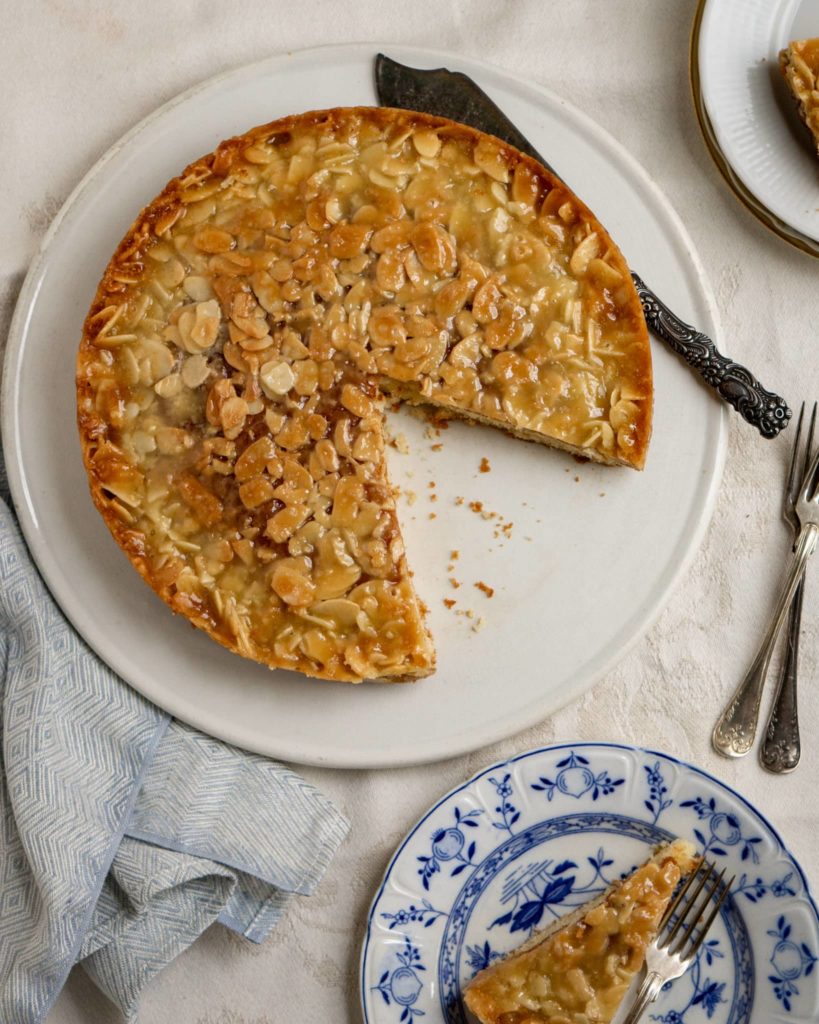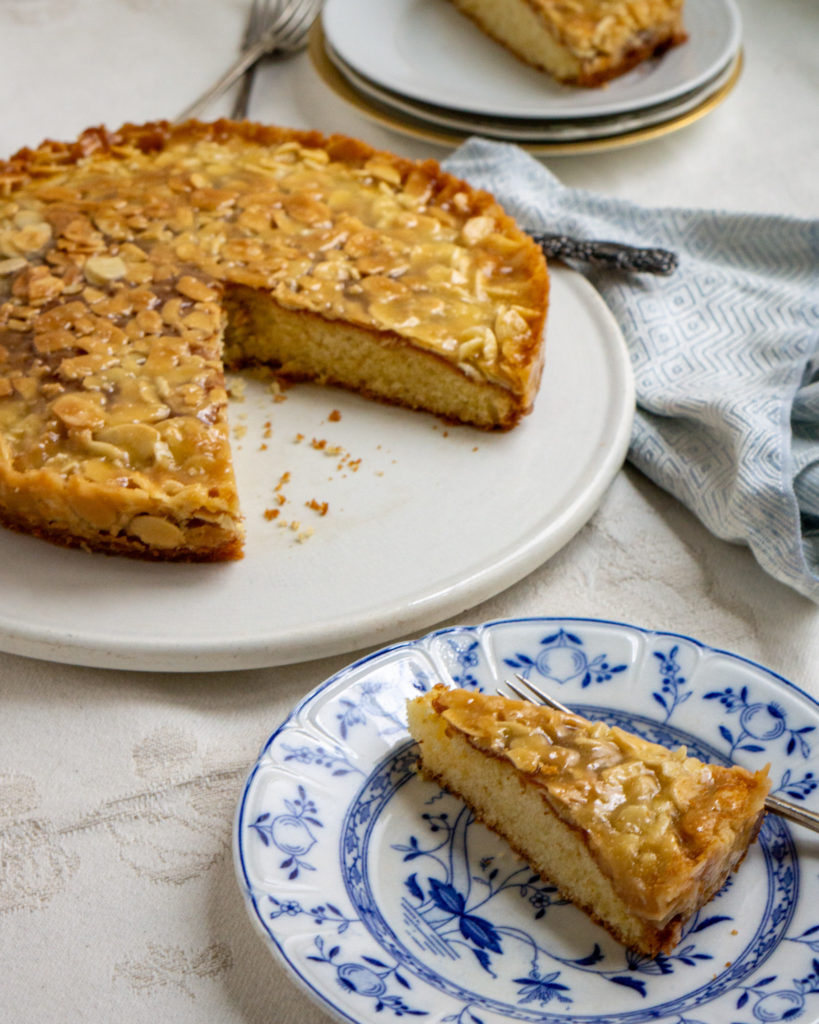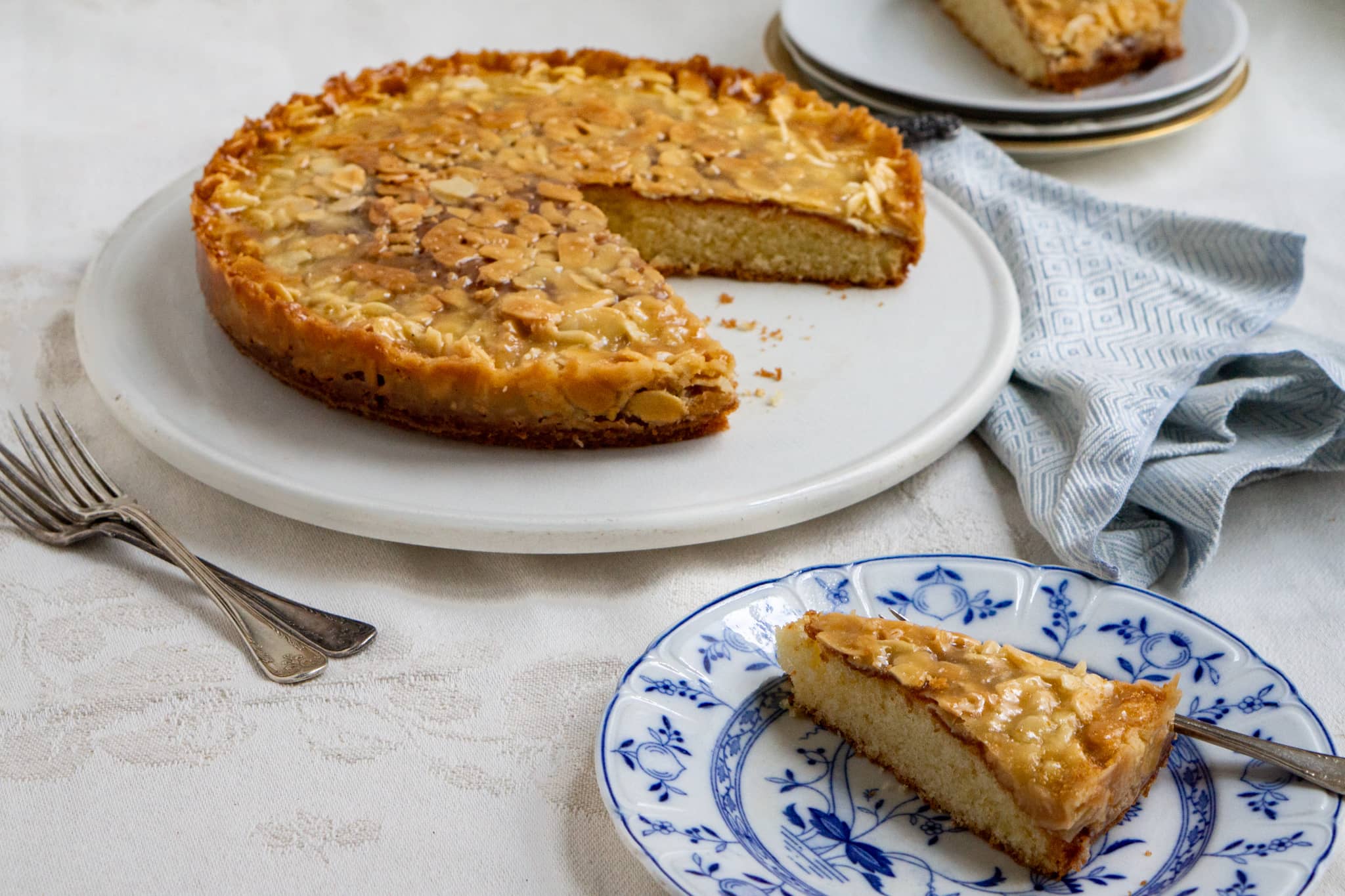Passionate love, jealousy, desire, hatred, betrayal, and murder. Is that what leant its name to the Swedish Tosca cake? We’ll take a look at that soon. Because who can resist this Swedish almond caramel cake, known in Sweden as toscakaka? Well, not me anyway.
The second best thing to tasting it in real life is of course to watch it in stop motion-animation:
Why is it called Toscakaka — Tosca cake? About the cake’s origins
So, how did the cake get its name?
It is natural that we focus our attention on Puccini’s opera Tosca, which premiered in Rome in 1900. It was based on the French play La Tosca from 1887. The opera had its Swedish premiere at the Royal Opera House in Stockholm in 1904.
During the entire beginning of the 20th century, there are heaps of references to both Tosca and La Tosca in Swedish newspaper Svenska Dagbladet. Information about performances abroad, short notices on La Scala news, and reviews of various singers’ ability to embody Floria Tosca — you’ll find it all.
Already in 1934, the ads in Svenska Dagbladet starts to offer toscatårta, and in 1947, toscakaka appears among the recipes. Even though I cannot exactly connect the cake to the opera — or by all means to the play which Sarah Bernard enjoyed great success with — it is not a far-off conclusion.
It wasn’t just cakes that borrowed their names from the opera. During the 30s, the horse Tosca seems to have done well at the races. In 1932, 4711 didn’t just offer their classic cologne, but also the perfume 4711 Tosca (as well as 4711 Rheingold, if you were more of a Wagner-person). In 1933, a shop offered the “summer’s new one-colored cloth”, crepe Tosca. Considering that the cloth was described as practical, it’s probably not the same as when Svenska Dagbladet notices that Mrs Thiselius wore a “rose tosca tull dress” at the annual ball of the Order of the Amaranth in 1930. A skyblue dress in “Tosca tulle” is also worn by Lisa af Petersens at the ball in 1934.
Considering the wealth of unrelated items that have been named Tosca, it isn’t strange to think that the cake would have received it from the opera or play, too.
Tosca becomes synonymous with an almond caramel glaze
A toffee-flavored almond glaze became synonymous with the name Tosca early on. For example, in Konditorns uppslagsbok (1948), the almond paste-based cookie Rigoletto and Toscakakor are both spread with what is referred to as Toscasats or Toscamassa — a Tosca glaze. The book suggests that “Tosca cakes are a delicious and well-known baked good that also can be made bigger, as cakes”.
Apart from the almond caramel cake, we have other sweets that also borrowed the name. For example, Svenska Dagbladet shares a recipe of tosca apples in 1963. In 1967, ads offer “toscariner” — or what we today might call tosca mazarines. Today, you’ll find tosca buns in supermarket and at 7/11 as well as at the fancier cafés.
The almond caramel cake even becomes popular enough that we get a ready-made baking mix for tosca cake. In the 90s, Svenska Dagbladet’s test panel reviews it by baking it in the microwave… Oh, well, I have nothing polite to say on the matter.

Toffee cakes in other countries
Germany has a cake called Bienenstich — “bee sting cake”. This yeasted cake is topped with a honey- and almond glaze and filled with a vanilla custard.
Florentines are almond- and nutbased thin cookies that often contain dried fruits such as cherries or raisins. I’ve also seen a few versions of cakes with florentine topping — apparently, a Florentine cookie in Japan is a shortbread cookie with an almond glaze. A shortbread version of our dear Tosca cake!
What both the German bee sting and the florentine biscuits have in common is that they often contain honey — which I’ve only seen listed as an ingredient in a few Tosca cakes in Sweden. Tosca cakes can instead contain golden syrup in the glazing. Personally, I don’t find the syrup necessary for a chewy toffee glaze.

How to make Swedish almond caramel cake, Tosca cake (Toscakaka)
A piece of advice from Svenska Dagbladet: plastic foil makes the glaze wet and grey — use aluminum foil instead. Recipe based on the one in Sju sorters kakor:
Ingredients
Cake:
100 g (1/4 cup + 3 tbsp) butter
2 eggs
1 1/2 dl (1/2 cup) sugar
2 dl (4/5 cup) flour
1 tsp baking powder
1/2 tsp vanilla sugar or 1/4 tsp vanilla extract or vanilla powder
1/2 dl (1/4 cup) cream (you can use milk instead if you prefer)
Butter and breadcrumbs for the springform
Almond caramel glaze:
100 g (1/4 cup + 3 tbsp) butter
6 tbsp sugar
2 tbsp milk
2 tbsp flour
2 1/2 dl (1 cup) almond flakes (about 80 g — use more if you like)
Instruktioner
- Set the oven to 175°C (345°F). Grease a springform, about 24 cm in diameter (9 inches), and coat it in breadcrumbs.
- Melt the butter. I like letting it brown to get an extra buttery, nutty flavor. Let it cool.
- In a bowl, whisk egg and sugar together, until it is white and fluffy.
- Mix the flour with the baking powder or vanilla sugar or powder. If you’re using vanilla extract, add it with the cream instead. Stir the flour mixture into the egg mixture and stir until you’ve got an even, lump-free batter.
- Add the cream or milk (and vanilla extract if using) and stir it into a thick batter. Pour it into a springform.
- Bake it on the lower rack in the oven for 20-25 minutes. The cake may still be a bit loose in the middle but should start to get color.
- When the cake has been in the oven for a while, make the glaze: stir all the ingredients for the glaze together in a saucepan (use the same as when you melted the butter!). Let it melt and stir until it thickens.
- Take the cake out and carefully spread the glaze over it, without pressing down on the cake. Put the cake back on the middle rack of the oven for about 15 minutes. The glaze should have become golden.
- Let the cake cool a bit before cutting around the edges with a knife to help the glaze let go of it. Eat and enjoy!
Suggestions
Vary the flavor however you like! Blogger Matgeek swears that the only right thing is to add the zest of a small lemon to the batter. After having baked this recipe several times, I think I’ll vary it with some cardamom next time. Or why not some orange zest?
The tosca cake comes as a fancier tårta as well. The most common thing seems to be to fill it with a firm vanilla custard. I’m thinking that a tart lemon curd could be a nice variation.
Do you want a bit of extra flavor on the almond? Toast it lightly in the oven before. You can also use chopped almonds instead. Vary the cake by skipping the almond and using chopped nuts, desiccated coconut, or seeds instead.



I love this cake. I add vanilla and almond extract to my version.
I think cardamom would be a great addition.
Yes it’s swedish but I would say it’s a common Portuguese cake as well, the ‘ tarte de amêndoa ‘caramelizada)’ based on ground almond or as a pound cake 4/4 with almond glaze, both are common there. And all these including tarte aux amandes and mandeltarte and mazarines in Sweden are inspired by the italian almond cake and frangipane. That’s what got popular in France, and later popular in Sweden.
Thank you for the comment, Martin! Cakes can have many origins and I wouldn’t assume Tosca cake was invented in Sweden. Happy to hear that the Portuguese enjoy something similar!